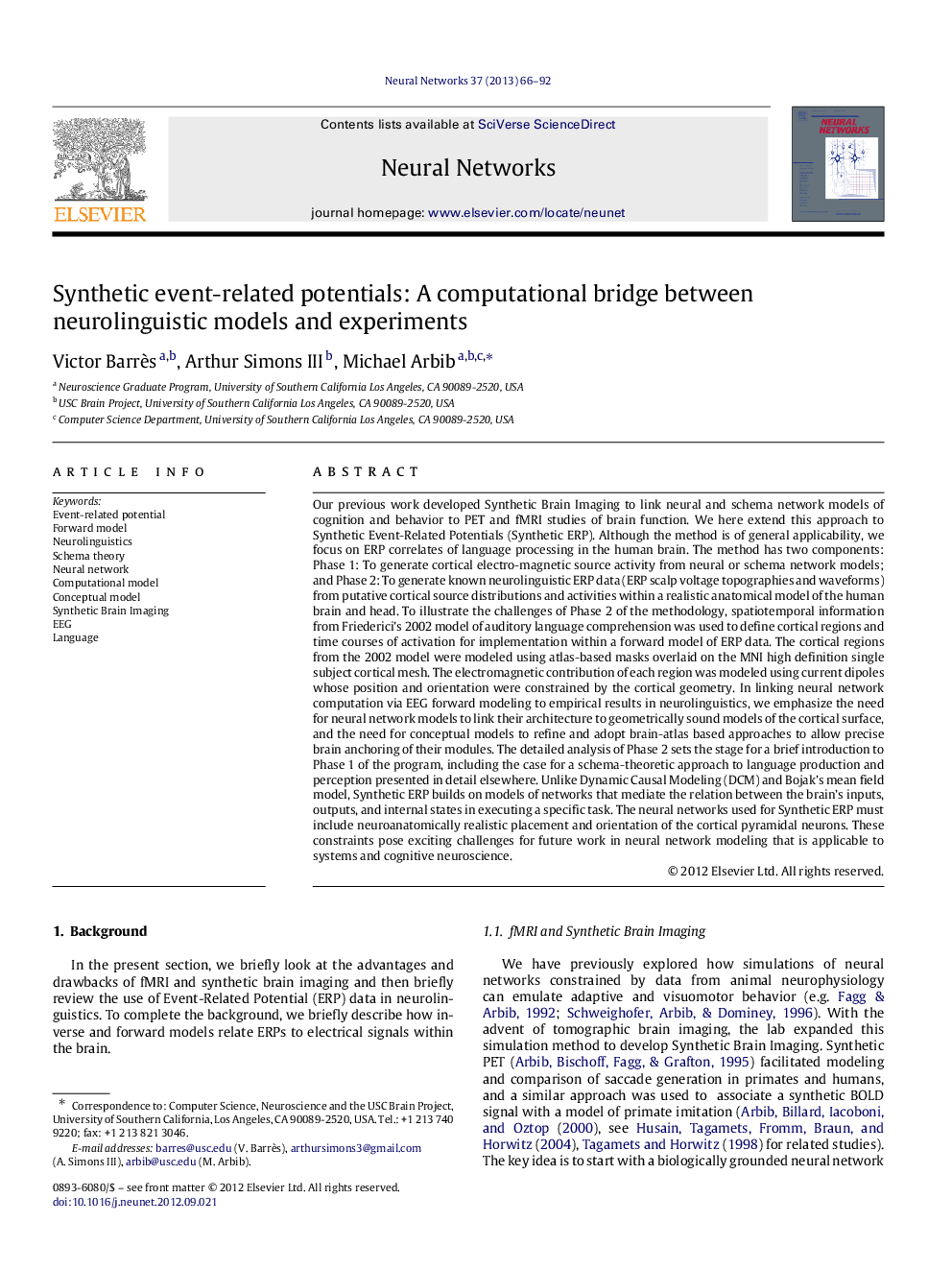| کد مقاله | کد نشریه | سال انتشار | مقاله انگلیسی | نسخه تمام متن |
|---|---|---|---|---|
| 404197 | 677397 | 2013 | 27 صفحه PDF | دانلود رایگان |

Our previous work developed Synthetic Brain Imaging to link neural and schema network models of cognition and behavior to PET and fMRI studies of brain function. We here extend this approach to Synthetic Event-Related Potentials (Synthetic ERP). Although the method is of general applicability, we focus on ERP correlates of language processing in the human brain. The method has two components: Phase 1: To generate cortical electro-magnetic source activity from neural or schema network models; and Phase 2: To generate known neurolinguistic ERP data (ERP scalp voltage topographies and waveforms) from putative cortical source distributions and activities within a realistic anatomical model of the human brain and head. To illustrate the challenges of Phase 2 of the methodology, spatiotemporal information from Friederici’s 2002 model of auditory language comprehension was used to define cortical regions and time courses of activation for implementation within a forward model of ERP data. The cortical regions from the 2002 model were modeled using atlas-based masks overlaid on the MNI high definition single subject cortical mesh. The electromagnetic contribution of each region was modeled using current dipoles whose position and orientation were constrained by the cortical geometry. In linking neural network computation via EEG forward modeling to empirical results in neurolinguistics, we emphasize the need for neural network models to link their architecture to geometrically sound models of the cortical surface, and the need for conceptual models to refine and adopt brain-atlas based approaches to allow precise brain anchoring of their modules. The detailed analysis of Phase 2 sets the stage for a brief introduction to Phase 1 of the program, including the case for a schema-theoretic approach to language production and perception presented in detail elsewhere. Unlike Dynamic Causal Modeling (DCM) and Bojak’s mean field model, Synthetic ERP builds on models of networks that mediate the relation between the brain’s inputs, outputs, and internal states in executing a specific task. The neural networks used for Synthetic ERP must include neuroanatomically realistic placement and orientation of the cortical pyramidal neurons. These constraints pose exciting challenges for future work in neural network modeling that is applicable to systems and cognitive neuroscience.
Journal: Neural Networks - Volume 37, January 2013, Pages 66–92